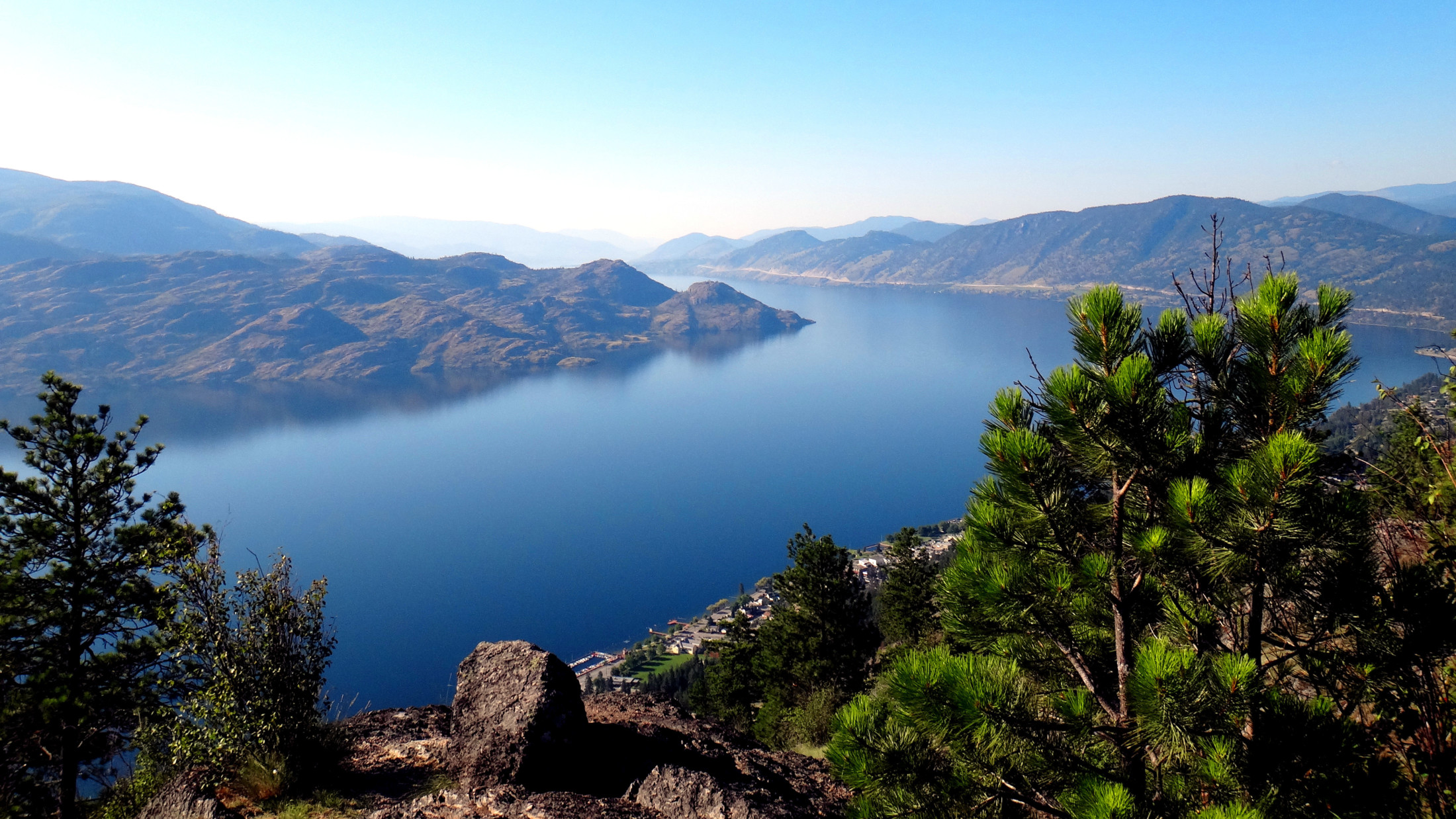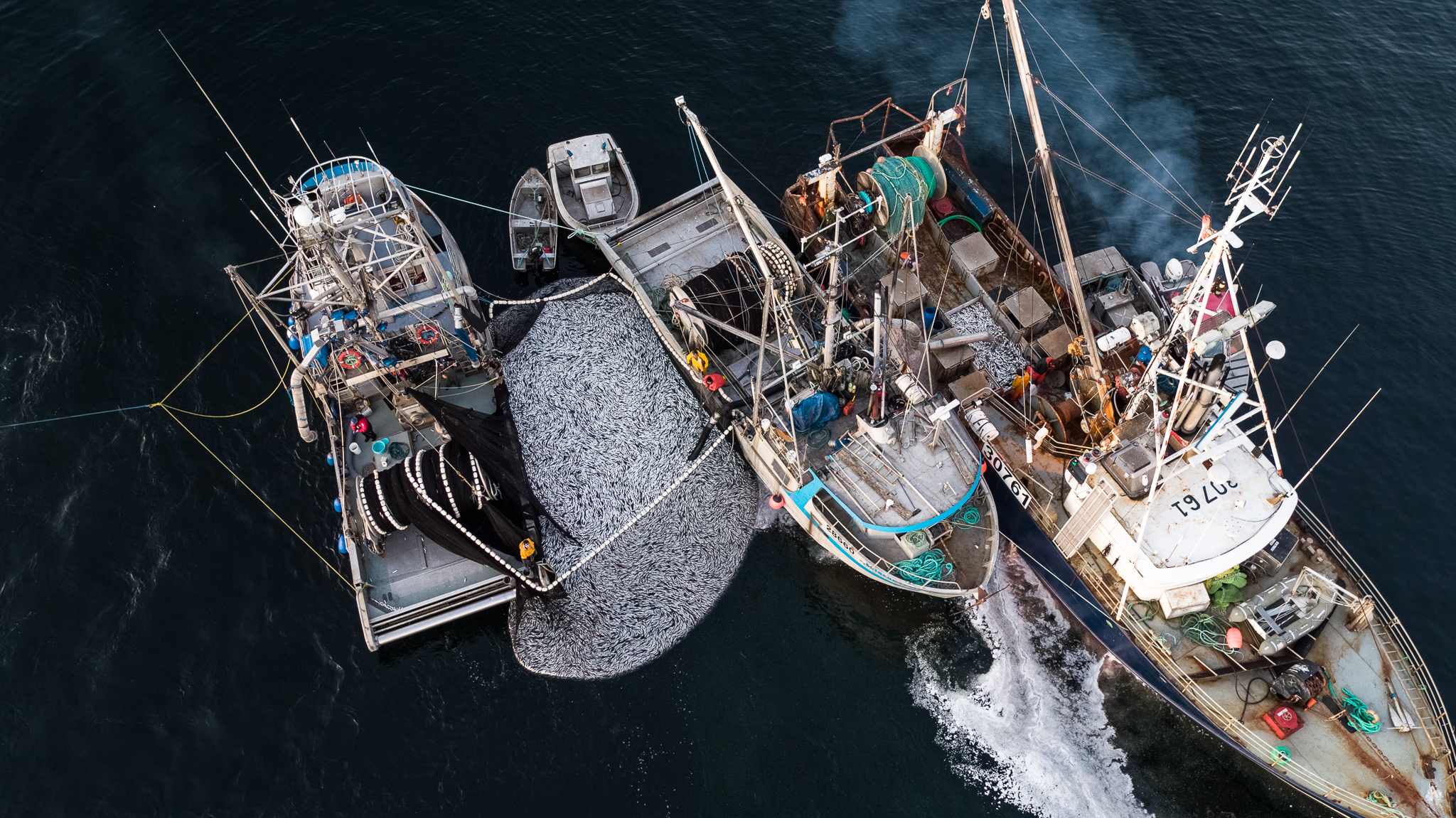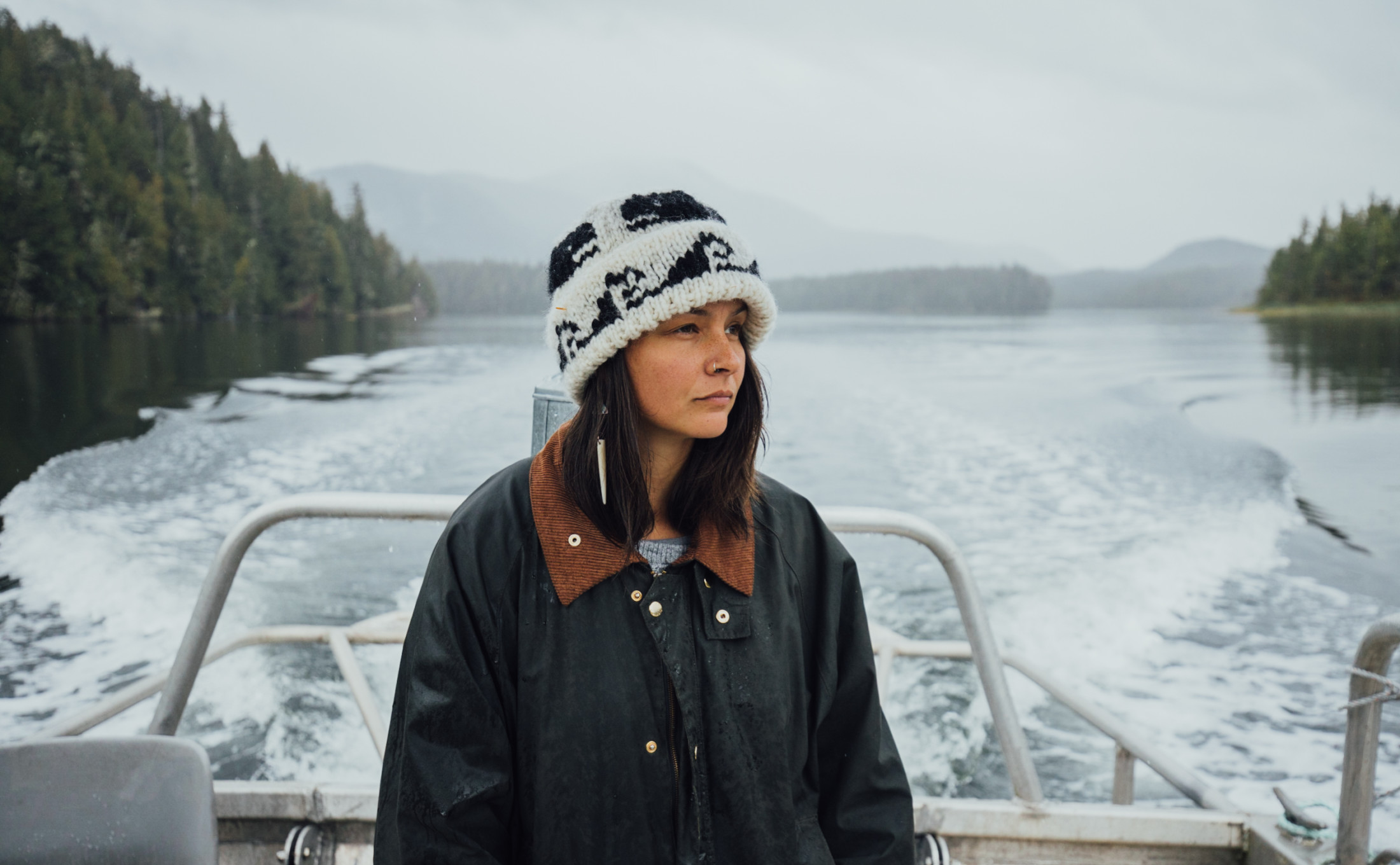
Hope for a huge, ancient and imperilled fish
First Nations are leading efforts to make sure lake sturgeon can find a home in...
When Chief Byron Louis was a boy, he would walk into his grandmother’s root cellar and see a combination of garden and traditional foods.
The 58-year-old, now chief of the Okanagan Indian Band, remembers that cellar well. He said it was filled with fresh produce from their gardens, tree fruits and canned vegetables and meats.
“You’d look up into the shelves, you’d see saskatoons, you’d see huckleberries, you’d see soap berries,” he said, adding that the stocked cellar was necessary “so we could survive” since they didn’t rely on any outside supply.
“No one should be more prepared for a pandemic than us,” Louis told The Narwhal.
And yet, two generations later, these kinds of food stores and the abundant fruit and vegetable gardens that supplied them are no longer common, Louis said.
Even before the novel coronavirus had people competing for food, a 2019 report found that 48 per cent of Indigenous households living on reserves and 23 per cent living off reserves face food insecurity. That’s a staggeringly high level when compared to the rate for all households across Canada: 8.4 per cent.
The sprawling effects of colonialism — cities encroaching on traditional lands, industry destroying hunting and harvesting areas, pandemics weakening populations and the loss of cultural knowledge — continue to play a significant role in disrupting Indigenous Peoples’ relation to food sources.
It’s precisely because of that history that Louis hopes his community can advance food sovereignty to be prepared for future disasters — more prepared than they were for the COVID-19 pandemic.
Yet, the combination of climate change, ongoing industrial development and coronavirus has led to a unique set of challenges for Indigenous communities across B.C. that have been working hard to protect and revitalize traditional food practices for decades.

The Okanagan Nation Alliance is working to restore salmon populations in the upper Okanagan watershed, Okanagan Lake, pictured here, and in the upper Columbia River Basin. Photo: Stephan Jürgensen / Flickr
Populations of salmon, herring and eulachon — known as the ‘
salvation fish’ upon which Nisga’a people have relied for generations — have dropped dramatically in recent decades. Moose populations have seen significant declines. Woodland caribou are endangered, while some herds in the southern part of the province have now been declared locally extinct. Elk herds are declining and their migratory patterns are changing.
Despite the growing impacts of industrial development and human activity on B.C.’s struggling wildlife, the province has struggled to improve the condition of most of these species or protect their critical habitat. And that has dramatically impacted the ability of many Indigenous communities to continue traditional harvesting practices in traditional territories.
Many First Nations now have to walk a careful line to balance food security and conservation during COVID-19.
The Gitxaala First Nation, located in Kitkatla on B.C.’s north coast, asked members to be careful as they sought traditional foods that are at risk, such as salmon and herring.
A number of recreational sockeye fisheries in the Skeena region were closed in 2019, due to low returns and predictions for 2020 are looking similarly gloomy.
“Given the anticipated low returns of Skeena River sockeye this year and the uncertainty regarding other salmon species returning to Gitxaala creeks, we ask that people refrain from fishing in our territory,” reads a March 26 statement issued by the Gitxaala fisheries and marine programs.
“There are many other species that Gitxaala depends upon for food that are in the same situation.”
Despite low salmon returns in B.C.’s rivers from the Skeena to the Fraser River, the federal government backtracked on promises to phase out open-net salmon farms off the coast by 2025. Salmon in open-net farms can pass on sea lice and disease to already-vulnerable wild populations.
The B.C. government introduced a wild salmon strategy in 2018, but critics say it’s more focused on protecting commercial fisheries than salmon.

The Strait of Georgia is home to one of the few remaining industrial herring fisheries on the Pacific coast of North America. The commercial herring fishery continues, despite calls for its closure due to declining herring populations. Photo: Ian McAllister / Pacific Wild
It’s hard on communities to cancel and limit events around fishing and harvesting that are so important to people, said Howie Wright, the fisheries program director for the Okanagan Nation Alliance in B.C.’s south interior.
The alliance of eight Indigenous communities has been working to restore sockeye salmon — called sc’win in nsyilxcən, the Syilx language — in the upper Okanagan watershed and the Columbia River Basin where successive four-year runs have been much lower than in previous decades. In 2014, the alliance opened a 2,300-square-metre hatchery that has the capacity to rear eight million eggs.
The hatchery releases fry every year, including this year, but, due to the pandemic, the alliance was forced to cancel a much-anticipated May event during which students release salmon fry they raised at school.
“People have worked so hard to bring back salmon in the Okanagan, and now there’s the issue of wanting to celebrate it, to harvest it and [COVID-19] has impacted some of the ceremony for the harvest,” Wright, who is Gitxsan, told The Narwhal.
Hunting and harvesting do provide some opportunities for physical distancing, if experienced individuals are going alone or with household members, Wright said, but added physical distancing can pose significant challenges for fishing. People typically go out in boats and work together to cast nets and carry fish out for cleaning and storage — a situation to which Wright said he’s still not sure how to apply social distancing.
Important fieldwork has also been delayed by COVID-19, Wright said, meaning his team was unable to tag salmon, a process critical for accurately predicting survival rates upon their return.
Heading into the summer, Indigenous communities across B.C. are struggling to get a clear picture of what the harvest season amid coronavirus will look like.
The provincial government lists aquaculture and fishing as essential services during the COVID-19 pandemic, and B.C.’s Provincial Health Officer Dr. Bonnie Henry has so far not called for any restrictions on angling or hunting. Washington State halted recreational fishing on March 25 and Nova Scotia delayed its sportfishing season until at least May 1.
On its website, Fisheries and Oceans Canada said it is “considering how to address the negative market impacts of the COVID-19 pandemic on various fisheries … including the impact of Indigenous partners and participants in those fisheries.”
“It is anticipated that food, social and ceremonial fishing would continue as normal as there is no sale component to these fisheries.”
Jess Housty from the Haíɫzaqv (Heiltsuk) Nation is executive director of the Qqs Projects Society, a non-profit that leads a community garden program. She said there’s “a ton of anxiety and uncertainty in the air” as the supply chains to remote communities are disrupted.
Housty said this is a concern for the Haíɫzaqv, who made the difficult call to close their commercial herring spawn-on-kelp fishery, a “hugely significant” decision for families who rely on the fishery economically.
“The reality is it’s so hard to find ways to go out and safely harvest any kind of marine or intertidal sea foods while still practising physical distancing and other basic safety measures around COVID-19,” she said.
“We are the descendants of those who survived epidemics.”
The federal government is providing Indigenous communities with $305 million through the Indigenous Community Support Fund to address issues arising from COVID-19, including food security.
Housty said the Qqs Projects is giving away all the supplies it had for its 2020 program so people can plant what she calls “granny gardens” to secure their own food sources and practise physical distancing in a safe and healthy way.
“We invite our community members to channel the strength and resilience of the matriarchs whose plant knowledge contributed to keeping our people fed through every crisis we’ve ever endured,” she tweeted. “Our people gathered in the village of Bella Bella ~1900 as the few Haíɫzaqv people (around one per cent) who didn’t succumb to influenza and smallpox banded together here. We are the descendants of those who survived epidemics.”
Housty has been sharing videos on Facebook and audio on the local radio to help people with their gardens. The Haíɫzaqv Nation has also invested funds in fishers and harvesters to bring country foods back to the community.
“It’s weirdly made me feel even more connected to the community even as I’m seeing people in person less,” she told The Narwhal.

Jess Housty, executive director of the Qqs Projects Society, said there is much “anxiety and uncertainty in the air” as supply chains to remote Indigenous communities are disrupted. Photo: Louise Whitehouse / The Narwhal
Other remote First Nations are faced with the difficult decision to either close off their communities to outsiders or keep the flow of people, food and supplies open.
North of Tofino, the Ahousaht First Nation is accessible only by boat or floatplane and is not allowing any outside visitors.
Though the community is relying on groceries from outside distributors and has a team of volunteers in place to deliver the food to community members.
The nation is also contacting Ahousaht people who live elsewhere to make sure they can afford groceries.
“We reached out [to Ahousaht members] almost within the first week, because we knew for a fact it would be a challenge,” said Curtis Dick, director of the nation’s emergency operations centre.
Dick said locals in Ahousaht continue to fish for food, but on a solo basis or with members of their household.
In northern B.C. the remote communities of the Tahltan Nation remain reliant on food transported from the province’s south, which worries Tahltan citizen Allen Edzerza.
He pointed out trucks are constantly coming in and out of the territory, transporting food, machinery and ore from mines, including the Red Chris mine.
Like Louis, Edzerza said he hopes the pandemic jumpstarts a resurgence in food sovereignty.
Recently the Tahltan Nation asked citizens to be mindful while hunting moose.
“Please be aware that cows are pregnant during this period. Allowing them to produce calves will help the declining populations recover. Aerial surveys show that 75 per cent of all moose close to the communities are cow/calves,” the Tahltan Central Government said in a notice to citizens.
“We have to start thinking about food security,” Edzerza said. “Like, can we get more of our produce growing in our territory, so we’re not so reliant on food being brought up from the south?”
Chief Louis said people from the Okanagan Indian Band, which is part of the Syilx (Okanagan) Nation, are still going to grocery stores but he hopes the band government can arrange some deliveries to people’s doors to save them the risk of being in crowds.
The Okanagan Nation Alliance, which includes seven Syilx communities, is also selling stored salmon typically saved for commercial sale to the community at wholesale price.
But Louis said it’s important to quantify the true value of food security for Indigenous Peoples. He pointed to a 2013 study from the Washington State Department of Ecology that found Indigenous Peoples living on the Columbia River would consume a pound of salmon a day in 1940.
Imagine, said Louis, a pound of salmon per day for the more than 150,000 First Nations people who live in B.C. today. At an $8.99 per pound rate, that would tally up to more than $500 million, he said. That’s an enormous value, he added, even before adding in all the other coastal and inland food — the clams, the eulachon, the game.
That value is lost to Indigenous communities in B.C., for the province’s benefit. As a result, Indigenous Peoples remain disproportionately food insecure as Canada profits off Indigenous lands, he said.
“We’re the ones subsidizing Canada.”
But, Louis adds, the true economic and social value of these traditional food sources are beyond measure.
“They always say you are what you eat. We are from this land. Not only in a spiritual sense, but in a very physical sense,” Louis said.
“Everything we are — and what we were — is where we stood. That is food security.”
Get the inside scoop on The Narwhal’s environment and climate reporting by signing up for our free newsletter. A $335 million funding commitment to fund...
Continue reading
First Nations are leading efforts to make sure lake sturgeon can find a home in...

We’re excited to share that an investigation by The Narwhal is a finalist for the...

A new documentary, Nechako: It Will Be a Big River Again, dives into how two...
